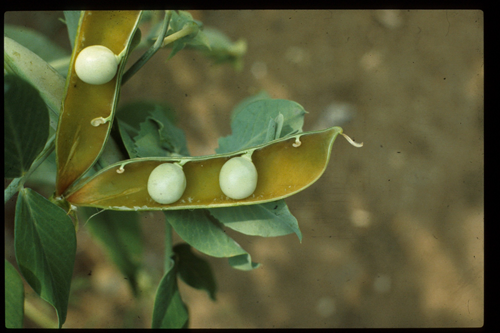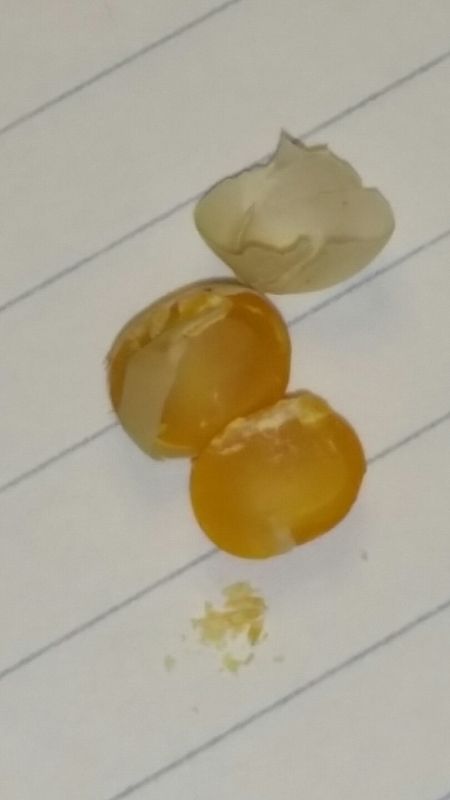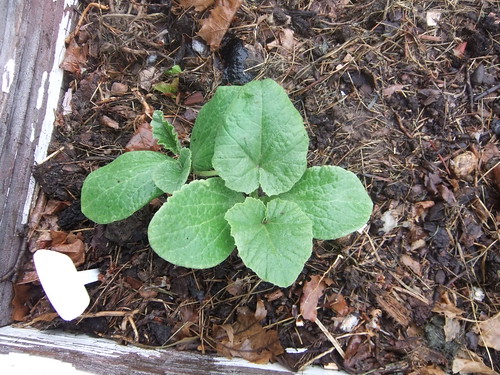|
|
Post by blueadzuki on Mar 1, 2015 13:39:53 GMT -5
Hi all,
After some thought I have decided that it may be time for me to try and do a little breeding of what peas I have (as opposed to simply growing them as is and hoping for a crop) to try and get a few improvements in.
To that end , I was wondering if anyone can help me with a little matter. Does anyone out there know the name of (or, dare I hope, have) any variety of common pea that has the Orc gene in it (for those who have never heard of it, this is a gene that ups the pea's content of beta carotenes to the point where the insides become bright orange, like the color of a red lentil.) Soup peas seem to do best for me, and if I am going to wind up having to eat most of my mature peas as soup, I quite like the idea of a higher beta carotene content. I found a few studies on the genes transmission (it's incompletely dominant to yellow), but no named strains. The study used numbered accessions, and since it was in India I rather suspect that those types are not available on the open market (though I admit freely that I haven't gone on GRIN to check.) I don't have great hope that anyone has any. The trait/gene was only noticed by science in 1983, so I tend to think it is fairly rare. I know that there are SOME Orc peas wandering around this country, because I got one long ago in a pea packet (which I regrettably squandered, and can no longer get a replacement of.) So if anyone knows of any, or has any, I'd appreciate the help (Note for anyone who wished to check their stocks to see if they have any and did not know; when covered by a standard white pea seed coat, a pea with the Orc gene will appear to be pink.)
|
|
|
|
Post by ottawagardener on Mar 1, 2015 17:03:50 GMT -5
You have my attention. Wish I could help.
|
|
|
|
Post by diane on Mar 1, 2015 18:19:24 GMT -5
Where did you find the single seed? In a seed packet for growing or one for cooking?
|
|
|
|
Post by blueadzuki on Mar 1, 2015 19:01:13 GMT -5
Actually this time it WAS a growing packet. A long while ago (at least a decade by now). I was placing an order with Underwood Gardens and I saw that in their flower section they had a offering marked "field peas". (based on the description, I think they were being offered as flowers because a lot of the older strains of pea have flowers that are two-tone pink and purple.) I ordered a packet. When it came an I opened it I was rather surprised. I had assumed that what I would get would be similar to the field peas I had gotten from places like Seeds of Change (which offered Austrian Speckled at the time); a mixture of brown and tan skinned somewhat irregular looking seeds which I might be able to extract some "Camo" patterned (what I called marmorated peas before I knew they were called marmorated) or some other oddments. What I got instead was a packed of peas that more or less looked like the standard white soup peas or snap peas I was used to........EXCEPT they had the mini gene, and so were only about the size of BB pellets. ALMOST all of them were a standard flat white, but there was one seed that actually was tan with speckles and.......one that was pink. I wasted the pink one due to impatience and ignorance (I had never heard of the Orc gene at that time). Before planting it I tried to remove the seed coat to see if it actually was pink (I had seen peas whose seedcoats were sort of red by that point, so it didn't seem impossible.) I saw the orange cots. Unfortunately removing the seed coat also cracked the radicle, making the seed non-viable. And by the next year they had dropped that product from the catalog, and I have yet to find another company offering something comparable, thought that is not for want of looking. Now I actually could use any of the seeds in there, since I really could use a good source of mini peas (with our iffy springs, the minis have the advantage here. Their much smaller plants, with much smaller pods, but they also tend to have much smaller grow schedules (I've seen mini peas go from seed to seed in 30-45 days)
But you do have a point, the most likely way I'll find another is in a bag of eating peas, probably one from India (since it sounds like that is where the gene usually shows up in the population).
One thing this is going to change I guess is on a slightly different color. The reports I read covered how Orange is incompletely dominant to yellow, but didn't cover what happens when an orange pea crosses with a green one. Since the orange is incompletely dominant (if you cross an orange and a yellow, the resultant pea is light orange) I imagine you might get a pea that was light orange and green mixed together, or in other words, brown. So I'll also hold onto and plant any brown cotted peas I find. Only thing is since brown is also a pretty common thing to see on peas that have actually spoiled, I image they'll be a LOT of empty holes in those planting zones!
|
|
|
|
Post by diane on Mar 1, 2015 19:32:17 GMT -5
I'll prowl through an Indian grocery for you.
|
|
|
|
Post by darrenabbey on Mar 1, 2015 23:20:28 GMT -5
Interesting. I'll definitely keep an eye out for such peas. So far I've mostly found yellow and green, with one unusual spotted one (https://www.flickr.com/photos/darrenabbey/16465561089/).
|
|
|
|
Post by blueadzuki on Mar 2, 2015 7:20:07 GMT -5
That spotting is in the seed coat, not the cots. It's actually very common in older field peas. Assuming that your source is peas being sold for food, the most likely reason is that someone planted the field with one of the older field peas like Austrian speckled and a plant manage to evade being turned under and got it's seed mixed in (no, I don't know why someone would need to use a green manure to grow legumes, since legumes are pretty close to their own green manure, but they do. Maybe it makes for bigger harvests on the second crop.)That pea will probably grow to be rather more hardy than the white ones, though it is possible the peas themselves won't taste as good (since the colored coated peas often have more of the various compounds they inherited from their wild ancestors to deter animals eating the seeds.) The flowers will also probably be more colorful (most likely that two tone I mentioned; pinkish standard, bluish purple keel.)
Later one you may run into peas that are marmorated, which causes the seed coat to develop rounded blobs of color that to me always look like military camouflage (or why I used to call them "camo" peas before I found out the real name) There are also colored hila, which can be rather visually arresting, especially if the pea doesn't have any color genes in it's seed coat (you'll see a pea that has a standard white seed coat, turn it around, and the hilum will be jet black so it looks like an eye staring at you.)
|
|
|
|
Post by nicollas on Mar 2, 2015 7:39:52 GMT -5
|
|
|
|
Post by diane on Mar 2, 2015 12:42:44 GMT -5
One of the ones listed in GRIN, W6 15375, is described as having orange foliage, which sounds exciting, but all the pictures of it show green leaves.
Maybe "Genotype: a Af/- Apu/- Bt/- I/- le Orc/- Pa R/- Tl/- Phenotype: foliage orange' doesn't refer to leaf colour - maybe leaves that look like those of an orange tree?
|
|
|
|
Post by nicollas on Mar 2, 2015 13:30:59 GMT -5
Yeah i've spotted this one too, and was disappointed by the pictures too  |
|
|
|
Post by keen101 (Biolumo / Andrew B.) on Apr 2, 2016 11:06:32 GMT -5
Can you describe more about what the orc gene would look like if i encountered it. The salmon-flowered pea seeds are often pinkish to a light orange, but i don't know if that is the orc gene. They certainly don't have orange leaves. This year i finally got my hands on the orp gene from IPK gatersleben genebank. It's called "orange pod" on the seed packet. data.jic.bbsrc.ac.uk/cgi-bin/pgene/default.asp?ID=515 |
|
|
|
Post by nicollas on Apr 2, 2016 11:09:58 GMT -5
Great  Tell us informed about what it will produce ! |
|
|
|
Post by keen101 (Biolumo / Andrew B.) on Apr 2, 2016 11:48:56 GMT -5
Great  Tell us informed about what it will produce ! no idea really. From what it sounds like it might not be a remarkable trait. Here is the only photo i can find:  On the other note though, here is a place you can order seed for the orc orange seed gene. If someone orders some i'd be interested in seeing pictures of it and whether its a trait i would want to have. bioinf.scri.ac.uk/germinate_pea//app/core/passport/view_accessions.pl?accession=373 |
|
|
|
Post by zeedman on Apr 2, 2016 15:32:26 GMT -5
Would this qualify as an "orc"?  |
|
|
|
Post by blueadzuki on Apr 2, 2016 15:37:47 GMT -5
It might be a half orc (as in light yellow). Full Orc is pretty much the color of a red lentil. Or it could just be a little oxidized. Hard to tell
|
|





